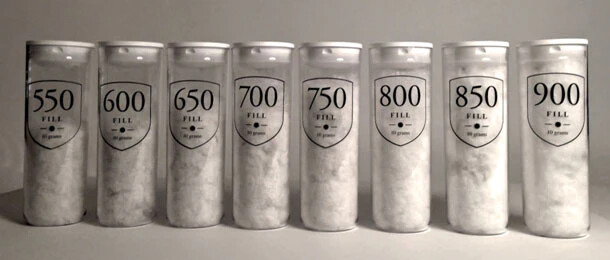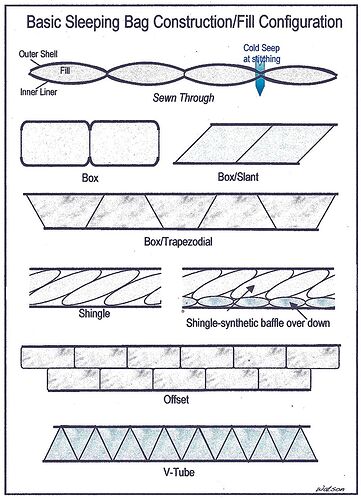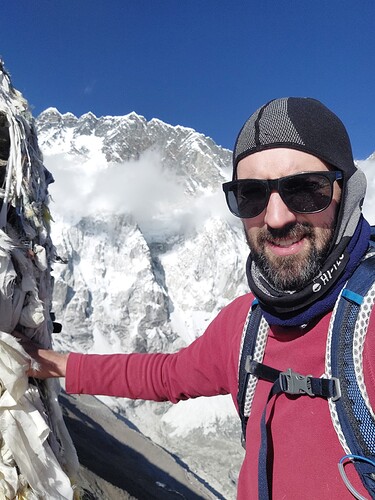I’m looking for the combination of most lightweight/ smallest packable down of synthetic insulating jacket that is also very warm.
I get cold really quickly so I want to use it for adventure racing when at transition or for sleeping.
Any ideas would be appreciated.
Seems like Patagonia Nano Puff is the ultimate answer from research, but the price is a bit excessive…unless it’s really worth that money.
Jackets can be warm, lightweight and relatively affordable - pick two. If its warm and light, it will be expensive; if its warm but not expensive, it will be heavy. I’ve been using a Mountain Hardwear Ghost Whisperer jacket for years, which is very warm and very light - I was lucky to get a really good deal on it, and its still one of the most expensive items of gear I have.
With down jackets - the two most important factors to look at are down fill quality and type of baffling. Unless you are looking at something to climb something really cold (Everest, Denali etc.), the baffling will likely just be the simple rectangular box type - but don’t even consider a jacket without any baffling. By contrast, the jackets and sleeping bags you use in the big mountains have things like trapezoid baffling to eliminate cold spots - which is really interesting from a technical perspective (tons of YouTube videos on the topic). But for a 300g jacket, there isn’t enough fill in it to do something like that.
I don’t think there’s anything locally that doesn’t have baffling - but I got some R150 down gloves in Namche last year which don’t have baffling and the are absolutely useless because of it. I wasn’t expecting much for the price, and bought them for home winter use, but the down just moves into one corner and the glove becomes a massive cold spot! I’m impressed how much down is in such a cheap glove, but I’m guessing its reject quality at that price ![]()
The fill is what really counts, though. My Ghost Whisperer has q-shield treated down 800 fill, which is water resistant and puffs up a lot for a relatively low volume of down. So it compresses into basically nothing but is very warm. Remember - the point of down is to stop air moving around and thus trap in the warmth. The higher the down rating, the less down is required to fill the space. Here’s a picture stolen from a writeup on the topic - each container has the same weight of down, but you can see how each relatively fills more space.

You’ll struggle to find much above 650 fill locally. I think Hex Valley Down might use 800 fill.
Just with down vs synthetic - remember that SA conditions are usually wet, and if down gets wet it becomes largely useless. Synthetic is often better for SA conditions, and is considerably cheaper too, but heavier. Before I got my waterproof treated down sleeping bag, I only used to use synthetic sleeping bags, even for the top of the Drakensberg in winter. This is even more relevant for jackets - seeing as you want to wear all your warm clothing when there’s a strong wind and its bucketing down, but a down jacket is the wrong choice for these conditions. Down jackets don’t do well under other layers as they get compressed, thus defeating the point. They also don’t work as well with a backpack on for this reason.
Fun side note: tents made specifically for above 6000m in the Himalaya, or Arctic/Antarctic peaks often save weight by not sealing the seams. Because they are being used in conditions where it only snows as its too cold for rain, they don’t need this. Reinhold Messner was one of the first people to design tents to these specs, and his tents came under fire with comments like “if it doesn’t work at 3000m in the Alps, how will it work at 8000m on Everest” - when in fact it was specifically designed for the latter and not the former. Remember that when looking at jackets - don’t buy a jacket for Iceland when your plan is to use it in the Cederberg or Drakensberg, the conditions are completely different.
Jackets like sleeping bags are always quite a subjective thing as it’s a combination of environment and how your body responds. Ghaznavid has given a great summary above.
My two cents is in terms of quality/cost/warmth/weight on the local market the Decathalon Trek 100 has been a good experience for me. Light, 800 CUIN RDS down for about as low as a price as you hit locally. I own both that and a First Ascent equivalent, and that is a lot warmer and lighter. I think the FA is 650 fill. So the Trek 100 has become my go to for going i my pack when hiking. The FA is a nicer general use, fabric is a bit heavier, felt lined pockets and an inside pocket is handy.
Decathalon also makes some very cheap and decent synthetic ones. I’ve got an older hoodles version of this. Not as warm as the down, but breathes very well and has become a great knock around dayhike and around town layer. Versatile and not too worried about damaging it.
Thank you for the input!! Will have a look.
To expand a bit:
The different types of baffling: box wall / stitch through / trapezoid etc.
Most local garments will have stitch/sewn through baffling. This creates cold spots where the stitching lies. Also, most of the new down jackets (the latest trend now for a few years) have what they call “micro baffles”, these are inevitably stitch-through and average about 3-5cm wide, the result being more stitching thus more cold spots. You will notice the cold spots in the wind as it’ll cut right through. I wouldn’t bother with them. But this construction style might suit your needs. Box wall down jackets are rare, thus imported and very expensive.
Synthetic jackets work well, but only for a few years. You will see efficiency taper off quite sharply after 3yrs. Don’t believe the “down-like” blah blah. They do however work well in the conditions Ghaz outlined.
As a thought maybe consider a fleece with pile on the inside. First Ascent do a fleece called the Storm Fleece. It works well in wind, will bead off light rain and helps with moisture management. Most FA gear is very average but they do use some good fabrics. Look also for a fleece with Polartec Powerstretch, I think FA also did one. Very warm fleece.
Also…
https://columbiasportswear.co.za/women/jackets-vests/insulated-down-jackets.html
p.s.
I mention fleece not to be contrary but it occurred to me that if you’re doing AR and such you’d probably be sweating a bit, fleece might withstand multiple washings better.
It’s an interesting point. My first synthetic sleeping bag - a Mountain Hardwear Pinole - had this problem where it effectively went from being a great -7c bag to being largely useless after a few years. However, their newer designs where its a synthetic sheet as opposed to trying to make a synthetic puffer design have lasted amazingly, e.g. the MHW Lamina and Hyperlamina range. I’ve used my MHW Lamina 20 (synthetic, -7c comfort) on top of the Drakensberg in winter many times, and the coldest conditions I’ve ever slept on top of the Drakensberg in was in my Hyperlamina Torch - a synthetic bag rated for -15c. The design on these uses a plastic weld to attach the layers to the filling to reduce the cold spots, which works really well.
Agreed - that’s good advice. I rarely use a down jacket in SA conditions, and don’t own a synthetic puffer at all (and never have). In very cold conditions I usually wear a thermal vest, shirt, fleece (the cheap K-Way/FA/Cape Storm type - nothing fancy) and a good raincoat on top of all of that. If you’re walking, that’s usually more than adequate. Where down jackets are handy is in the evening when you’re sitting outside watching the sunset or something - but if I’m cold, I usually just get into my sleeping bag anyway. I rarely carry a down jacket unless its forecast to be well below 0c during the day, or my hike includes a pre-sunrise start.
Incidentally, when I was in Nepal last year, even above 5000m I would only have my down jacket on in the morning while having breakfast or at night, but I rarely wore it while hiking, and definitely not between 9am and 4pm. Here’s my summit shot from Chuckhung Ri (5550m) and all I have on is a K-Way fleece, a t-shirt and a thermal vest. Bearing in mind this was at 3pm in mid-November (late autumn). That’s the south face of Nuptse behind me, one of the biggest mountain faces on earth.
Interesting. I’ve been wondering about ME synthetic sleeping bags of late (know someone who travels to the EU). Whether they’d be up to scratch. Perhaps I just have prejudice…but now I’m derailing the thread…though your example of layering is instructive to the OP.
(nice pic, Nepal looks impressive)
I have a fair amount of their gear, they are one of my favourite manufacturers for certain items - especially sleeping bags. It’s a shame you can’t easily get their gear in SA. If you look at who their gear testers have been historically - including the late Ueli Steck and Ed Viesturs - these are some of the biggest names in modern mountaineering. Steck could have used gear from anyone he chose, his choice of MHW says a lot in my opinion.
Thanks, yes Nepal is amazing - highly recommended. Gokyo especially - watching the sunset over Everest from the top of Gokyo Ri was unquestionably one of the most special moments I’ve had in the mountains. If you’d like to read that story (or just look at the pictures) - its on my blog.
Ah. So I just watched his gear bunker video to confirm MHW or ME. He’s a funny guy.
I was referring to Mountain Equipment…ME.
Have not looked at MHW much, though I did own a windblock fleece of theirs once.
(sorry OP)
Salomon also make some decent down jackets. Being for runners they are on the lighter side. They also have a few interesting details like stretchy parts, some panels down and some (on the shoulders where there’s pack compression and rain fall) made of synthetics. They also use good fabrics.
I recently bought an ME sleeping bag, an expedition one for a 6000er I’m climbing later this year. First time I’ve bought something of theirs. I’ll provide feedback afterwards. I can’t really test it in SA as its far too warm. If the advertised specs are true, though, they currently produce he best-in-class for expedition sleeping bags. Online reviews for it are good.
As you say - going far off topic here.
Why we are also going into mid layers here. Has anyone had any first-hand experience with Alpha Direct?
Unfortunately I am not as blessed in the body heat generating department.
I recently got hypothermic in Stilbaai of all places and subsequently crashed my bike because I had zero control over my hands. Also an extremely painful experience to have circulation return to cold extremities.
I find it hard to manage body temperature and clothing especially at night. Always a pendulum from very cold to putting on more layers to overheating. And usually not a lot of opportunities to stop and change clothing unless you are very lost.
I can keep myself decently warm when moving, but the problem is stopping for sleeping or transition.
So I need to pack a bit more warm clothing (plus gloves and a lot of hand warmers) than most people especially for when we stop moving.
The plan is usually to sleep before a hill so that you can warm up immediately after waking up, which helps at least to warm back up.
I usually have clothes that I wear while moving and clothes (at least one layer) I try to keep dry for when its time to nap or transition.
Can possibly upgrade my fleece. There are some good suggestions here. I swould probably still need another layer even if that stays in transition box for some parts of the race.
Merino wool base layers?
@Helene
I’m going to state the obvious, but I find it helps to be reminded…
A lot of heat is also lost via head, wrists and neck. A good thick beanie that can preferably be closed under the chin, you know, with like long Golden Retriever ears, a scarf for the neck, and Buff around the wrists can make a diffs. Also consider thicker woollen socks. Bridgedale are excellent.
If temp management is an issue look for extra features in your gear like two way zips, a hood, thumb loops or decent ways to cinch the wrist closed tight to trap heat, longer than usual back, a good draw chord around the hem, long hemmed shirts you can tuck in to retain heat, maybe consider a puffer vest too… @Elizabeth 's recommendation of Merino is good too, they are very toasty and very very plush-comfy
I think, based on your answer, that you need a very good jacket and well designed kit. Kway might not cut it. Devil’s in the details. If you have the option of knowing someone who goes to UK or EU I can advise a bit as I’ve been indulging a bit in foreign fare.
Edit:
…and to add, extremities get cold when the core temp drops, blood is drawn away to protect the organs, so there’s a focal point. Also, eat more high energy food when you stop/sleep/etc.

